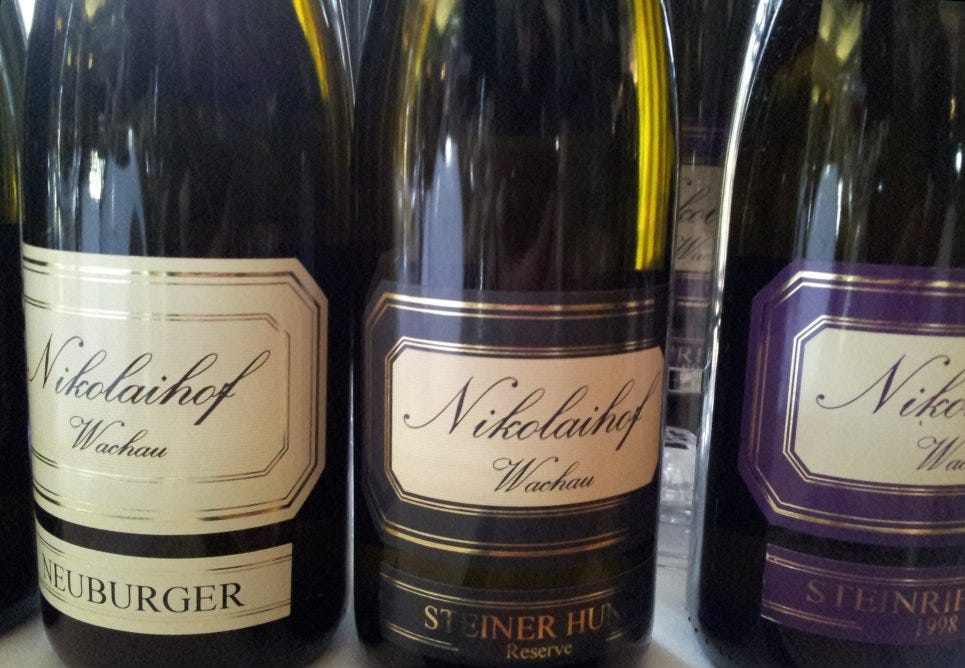Nuts about Neuburger

Nikolaihof labels
Not much over a month ago, I was waxing lyrical about my love affair with the Georgian Shavkapito grape. But that was then, this is now. Me and Shavkapito, we're still friends but now there's a new and similarly obscure Austrian grape variety in my life.
I first came across Feiler Artinger's superb Neuburger last September, and its generous yet elegant nutty complexity blew me away. It was so distinctive, and so different from most other Austrian dry white wine styles I'd encountered (predominantly fresh, mineral expressions of Gruner Veltliner and Riesling), that I easily picked it out at a blind tasting a few months later.
Neuburger is particular to Austria, and according to wine grapes, "a natural cross between Roter Veltliner and Sylvaner". Chiefly made as a bulk wine up until the 1980s, it became unloved and increasingly rare as producers moved to increase quality. A tendency to develop rot (Botrytis) probably didn't help Neuburger stay in wine growers good books…
Keep reading with a 7-day free trial
Subscribe to The Morning Claret to keep reading this post and get 7 days of free access to the full post archives.




